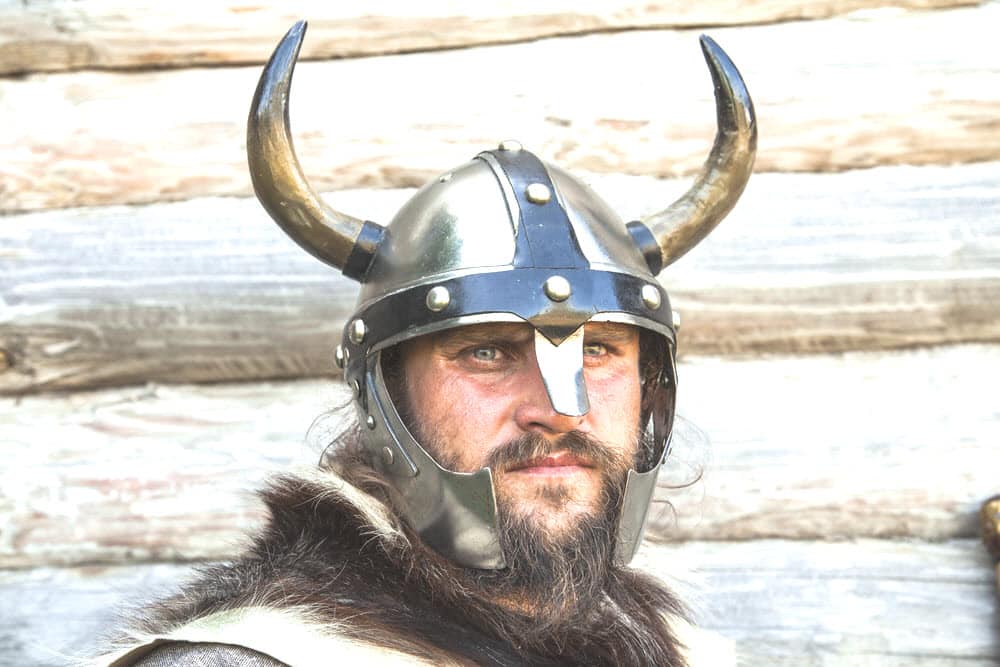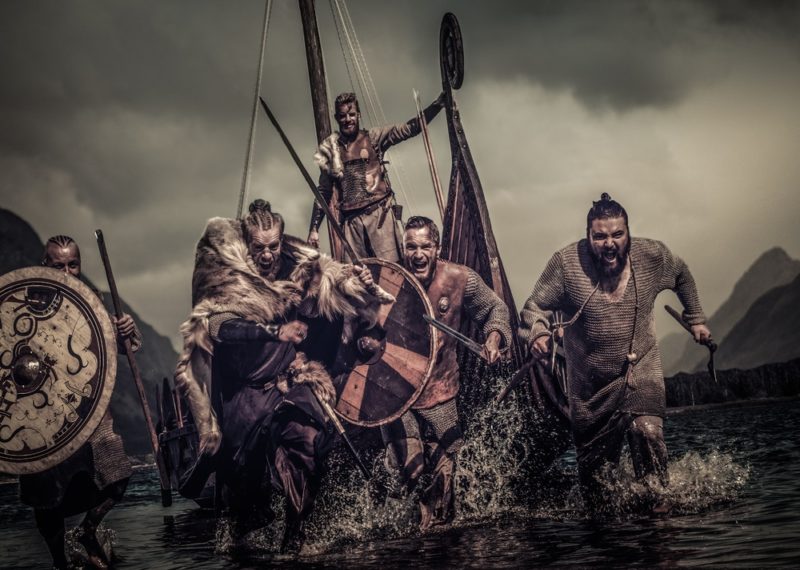Are you curious to find out more about Viking helmets? Do you want to learn everything there is to know about the design and use of these iconic and well-known helmets that served as a symbol of identity and bravery?
If that’s the case, stay around, and you can learn everything there is to know about the Viking culture. We can give a quick overview of Viking-era helmets and address some of the most often asked questions about them. Continue reading to learn more about this little-known aspect of the Viking culture and history.

What Were the Helmets Made of?
As previously stated, historical details about Viking helmets are questionable at best, we rely mostly on Nordic sagas. Thus, our understanding of Viking helmets is quite restricted today.
Let’s take a moment to consider why this is happening.
The reason for this is the small number of discovered Viking helmets, which some scientists believe demonstrates that iron helmets were not often made back then.
Some scientists, on the other hand, feel that the lack of Viking helmets is due to the fact that they were constructed of high-quality metals that were remelted for other purposes.
However, given the high cost of iron at the time of the Vikings’ existence, we can assume that only a small number of iron helmets were produced. As a result, a third theory holds that helmets were constructed of leather, which degrades over time, unlike iron. Leather helmets could therefore be another obvious explanation as to why Viking helmets were not discovered during archeological excavations. They simply disintegrated over time.
How Many Viking Age Helmets Have Been Found?
As previously stated, a few Viking helmets have been discovered in quite low numbers. Moreover, just one of the three found helmets had been in a good condition, with the other two having only rusted remains left.
The “Gjermundbu Helmet,” named for the namesake farm where it was discovered, was the only complete Viking helmet found (northern Norway). This helmet was made of iron and is thought to have been built around 970 AD.
Additionally, this helmet was made up of horizontally positioned metal hoops to which two vertical metal strips were joined (one from ear to ear, the other from forehead to nape). The helmet had four metal plates affixed to it, making a shape that would most likely completely protect a Viking warrior’s skull. Its shield (plates) that protected the warrior’s eyes and nose were an unusual feature of the “Gjermundbu Helmet.” A spike was also mounted on top of the helmet, which may have been used as a hazardous weapon in battle, whether for an attack or self-defense.
Only rusted pieces of Vikings helmets were discovered in the other two sites. The first was discovered in the Danish municipality of Tjele, and the second in the parish of Lokrume (island of Gotland, Sweden).
When Did the Vikings Wear Helmets?
This horned headgear is thought to have been an important piece of military gear worn by Vikings during battle. The warriors wore helmets on their heads to give themselves a terrifying appearance that made their opponents fear them. Viking helmets gave additional protection by covering a portion of the face (nose guard), as well as anonymity to the warriors.

FAQ
Did Vikings Have Horned Helmets?
First and foremost, there is no proof that the Vikings wore horned helmets, and nothing similar has ever been found in any excavations. They did wear helmets, but they were probably only simple skullcaps designed to protect the head from impact. If warriors were attacking you with clubs or axes, having a pair of horns on your head would have been useless.
Sutton Hoo and Vendel’s helmet plaques show that god-like soldiers wore helmets with projecting ‘horns,’ while Viking raiders and traders did not.
What Are the Types of Viking Helmets?
Cervelliere, Nasal helmet, Spangenhelm, Bascinet, Close helmet, Combat helmet, Barbuto, Great helm, Coventry Sallet, Coppergate Helmet, Frog-mouth helm, Kettle hat, Horned helmet, and Visor (armor).
What Did Vikings Really Wear on their Heads?
Evidence suggests that the Vikings preferred something simpler and more practical than a horned helmet, which is rather unsurprising. Only five Viking helmets remain, the majority of which are only fragments.
The most complete example is the Gjermundbu helmet, which was discovered in 1943 alongside the burnt remains of two males and numerous other Viking relics.
Is It True that Vikings Wore Armor?
Helmets, metal armor constructed of chainmail, and a type of armor known as lamellar, which comprised of iron plates sewn together, were worn by Vikings who could afford to wear armor. Layers of quilted material, such as wool or linen, were also employed by lower-status Vikings to cover their bodies during battle.
What Are these Horned Helmets Called?
During the Viking era, however, helmets were often fashioned from many pieces of iron welded together (right), a kind of helm known as the spangenhelm style. It’s easier to create a helmet this way, and it takes less time. Therefore, this may have been the reason why it was used.
Conclusion
Archaeologists are baffled by the absence of evidence, or rather, the lack of helmets discovered. The assumption that the majority of Viking warriors wore helmets cannot be proven, yet it cannot be denied either.
As a result, we have no choice but to wait for convincing proof of the Vikings using helmets. Perhaps, one day a mass grave of Viking warriors may be discovered with a helmet placed next to each of them. If this doesn’t happen, we may never be able to say for sure that the majority of Viking fighters wore helmets.
At this time, the only thing we know for certain is that one Viking wore a metal helmet during his military excursions. That helmet fought many battles with its owner, and it is likely what protected the Viking warrior from many terrible blows. On Gjermundbu farm, the valiant Viking warrior was buried with his helmet, carrying the secret of the legendary Viking helmets.



